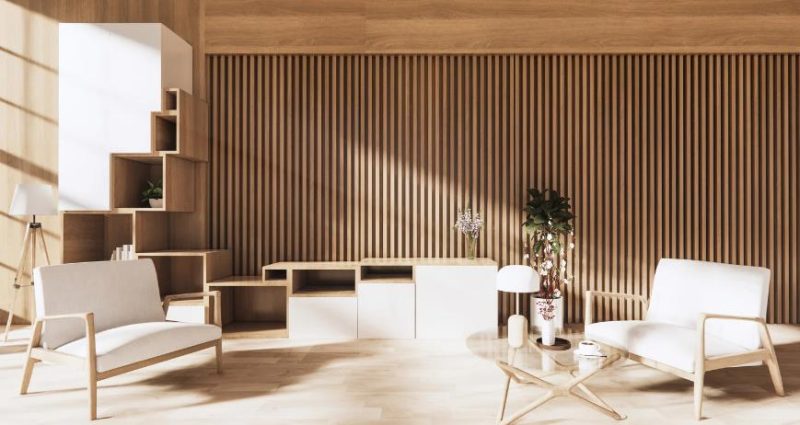Do you want to design an eco-friendly space that will impress customers and guests whilst also benefiting the environment? Designing commercial interiors with sustainability in mind is a good method to achieve both objectives.
In this blog, we’ll explore a few different ways that you could incorporate sustainability within your commercial Interior. We will touch on the benefits of reusing and upholstering current furniture when planning for your interior to give it a new lease of life and also incorporating eco-friendly materials into your commercial property to make it more trendy while also doing good for the planet!
Environmental Benefits of Furniture Reupholstery
Reupholstering is the process of changing or repairing the padding, fabric, or other components on a piece of furniture in order to improve or restore its look and usability. Reupholstery can breathe new life into old furniture pieces and is a more environmentally friendly and cost-effective alternative to buying new furniture.
Contributes Less to Global Warming
Reupholstering and reusing furniture is incredibly good for the environment since it lessens the effects of global warming, helps preserve our plants, trees, and forests, and lowers the risk of extinction for some of the most endangered and significant animal species.

By choosing to reupholster your furniture it can also help in lowering the volume of waste dumped in landfills. Landfills have negative impacts on the environment. They can pollute soil, air, and water with harmful chemicals and greenhouse gases, making them a large contributor to climate change. By extending the life of furniture pieces that might otherwise be thrown out, reupholstering can help lower the amount of waste sent to landfills, and it is one of the best waste management methods.
Furthermore, Reupholstering can lessen the need for new furniture, which requires the use of energy and raw materials for manufacturing and shipping. On average, creating new furniture generates around a thousand times more carbon emissions than refurbishing old.
It Reuses Resources

Upholstery helps in lowering overall resource use in addition to lowering its impact on global warming. Other materials, including cushioning foam or webbing, can be reused from pre-existing pieces in addition to the obvious fabric and leather used for reupholstering furniture. This enables us to utilise what we already have more effectively and reduces the quantity of new materials required for furniture creation.
Reupholstering is a fantastic technique to get furniture that looks brand new without harming the environment!
Eco-Friendly Materials
There are several options available that are kinder to the environment when it comes to selecting sustainable materials and there are several things to think about when selecting the materials for environmentally friendly interior design.
Start by looking for renewable, recyclable, or biodegradable materials.
Here are a few examples:
Reclaimed Wood
Reclaimed lumber or wood has been removed from old structures, barns, or other places and reused for use in flooring, furniture, and ornamental accents. It is a unique and environmentally friendly option for interior design as it reduces the amount of waste that ends up in landfills, which can take years to decompose and release harmful greenhouse gases. It can be used in a variety of design styles and can be finished in a number of ways to suit different tastes and preferences.
Bamboo

Flooring and furniture can all be made from bamboo, a quick-growing, self-renewing resource. It is a popular option for sustainable interior design because it is strong and long-lasting, and it’s also eco-friendly because it requires fewer pesticides and fertilisers than other crops.
Cork
Cork is a renewable resource that is typically used for flooring and wall tiles. It is obtained from the bark of cork oak trees. Given that Cork is biodegradable, no dangerous residues will remain when it naturally decomposes. Cork is also a popular choice for interior design because it is lightweight, durable, and has natural insulating properties.
You can also take a look at using Biodegradable fabrics, such as cotton, linen or recycled plastic glass, and metals that can be used to create furniture, lighting fixtures, and other decorative accents.
Another good material is stainless steel, which is a fantastic choice for commercial bathroom stall partitions and surfaces due to its 100% recyclability. Opting for recyclable or long-lasting bathroom sink and partition materials will help ensure that when it does come time to overhaul your current bathroom materials for a new design, the old materials will generate as little waste and environmental harm as possible.
Investing in sustainable methods and materials pays off long-term and also contributes to the preservation of the environment and the well-being of its inhabitants. Many renewable resources offer a unique and distinctive look that can add character and interest to a space. In summary, incorporating sustainability in interior design is beneficial for the environment, cost-effective, and can enhance your brand’s image as by showcasing your commitment to sustainability, you can attract a more conscious and loyal clientele.






